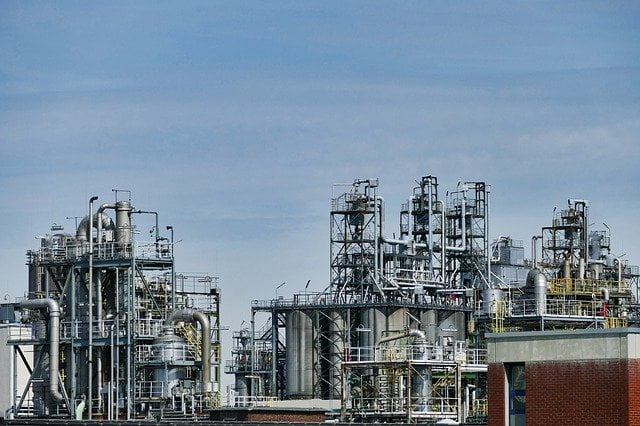Crude oil is a derivative made up of hydrocarbon deposits and other organic materials that occur naturally. Crude oil is a kind of fossil fuel that is distilled into useful goods such as gasoline, diesel, and a variety of other petrochemicals. It is finite since it is a nonrenewable resource that cannot be replaced naturally at the rate at which we use it.
Crude oil is commonly accessed by drilling. It is also discovered alongside other commodities such as natural gas (which is lighter than crude oil and therefore lies above it) and saltwater (denser and sinks below). Crude oil is distilled and converted into a range of products for sale to customers, including diesel, kerosene, and asphalt.
Crude oil, including its nickname of “black gold,” has a wide variety of viscosity and color, ranging from black to yellow, based on its hydrocarbon content. The first step of processing is distillation, which involves heating oil and separating it into various components. For more information on the commodity and its price dynamics, read on.
Crude Oil Usage History
While coal and other fossil fuels have been mined for decades, crude oil was discovered and produced during the Industrial Revolution. Its industrial applications were developed in the nineteenth century. Newly invented computers revolutionized the way we operate, and their operation was reliant on these tools.
The world’s economy is now heavily reliant on fossil fuels like crude oil. The need for these commodities often causes civil instability, as a limited group of countries owns the largest reserves. Crude oil markets and profitability are strongly influenced by supply and demand, much as every other sector. The United States, Saudi Arabia, and Russia are the world’s top oil producers.
Methods to Forecast Crude Oil Prices
Economists and economists struggle to forecast the direction of crude oil markets, which are unpredictable and dependent on various factors. They use various forecasting techniques and rely on the passage of time to affirm or refute their forecasts. A few predictions are collected in the Libertex crude oil article.
Below are the five most commonly used models:
- Futures markets for oil.
- Structural models focused on regression.
- Analysis of time-series data.
- Autoregressive Bayesian equations.
- Graphs of dynamic stochastic general equilibrium.
Crude Oil Trends for 2006-2026
Crude oil demand (including biofuels) dropped to 91 million barrels per day in 2020 but is expected to rise to 96.5 million barrels per day in 2021. The decline in 2020 was attributed to the coronavirus pandemic’s economic and mobility impact, including extensive shutdowns around the world. Compared to the daily oil demand of 86.4 million barrels in 2010, the growing demand trend from the previous decade is already visible.
Oil is a vital and flexible material that can be used in various ways and various types for various purposes. The road transport industry is the world’s biggest oil consumer. It accounts for more than a third of global oil production, owing to its dependence on petroleum-based motor spirits.
Global oil product demand is projected to hit 109 million barrels per day by 2045, according to OPEC, with transportation fuels like gasoline and diesel expected to remain the most common. In 2045, demand for diesel and gasoline is expected to reach 30 million barrels per day, up from 26.4 million barrels in 2019. By 2045, gasoline demand is expected to reach 27.4 million barrels.
Cutting Down on the Carbon Intensity
Beyond crude oil, attempts are being made by a company to reduce carbon intensity. Though oil production bodies such as OPEC believe crude oil will continue to be important in the future, attempts have been made within the energy sector to find a substitute for fossil fuel.
Hydrogen is one such option that has sparked a lot of interest. Because of its ability as an energy carrier, the most abundant chemical element in the universe has piqued interest. It may be used as the main ingredient in transportation fuels, electricity generation and storage, and chemical processing, similar to gasoline.
Though it is currently mostly obtained through natural gas combustion (so-called grey hydrogen), most investments are focused on making hydrogen production through electrolysis using renewable energy (green hydrogen) more cost-effective. As of 2019, the largest hydrogen users are oil refineries and ammonia extraction plants, with the shipping industry responsible for less than 1%.
Investing in Crude Oil
Futures contracts and spot contracts are the two kinds of oil contracts available to investors. Oil may be a speculative asset, a portfolio diversifier, or a hedge against related positions for individual investors.
Since crude oil prices are more unpredictable than stock or currency prices, active buyers and traders need to have good intelligence sources that report many factors that can affect oil prices. Though several websites provide crude oil coverage, only a few broadcast breaking news and current prices.





